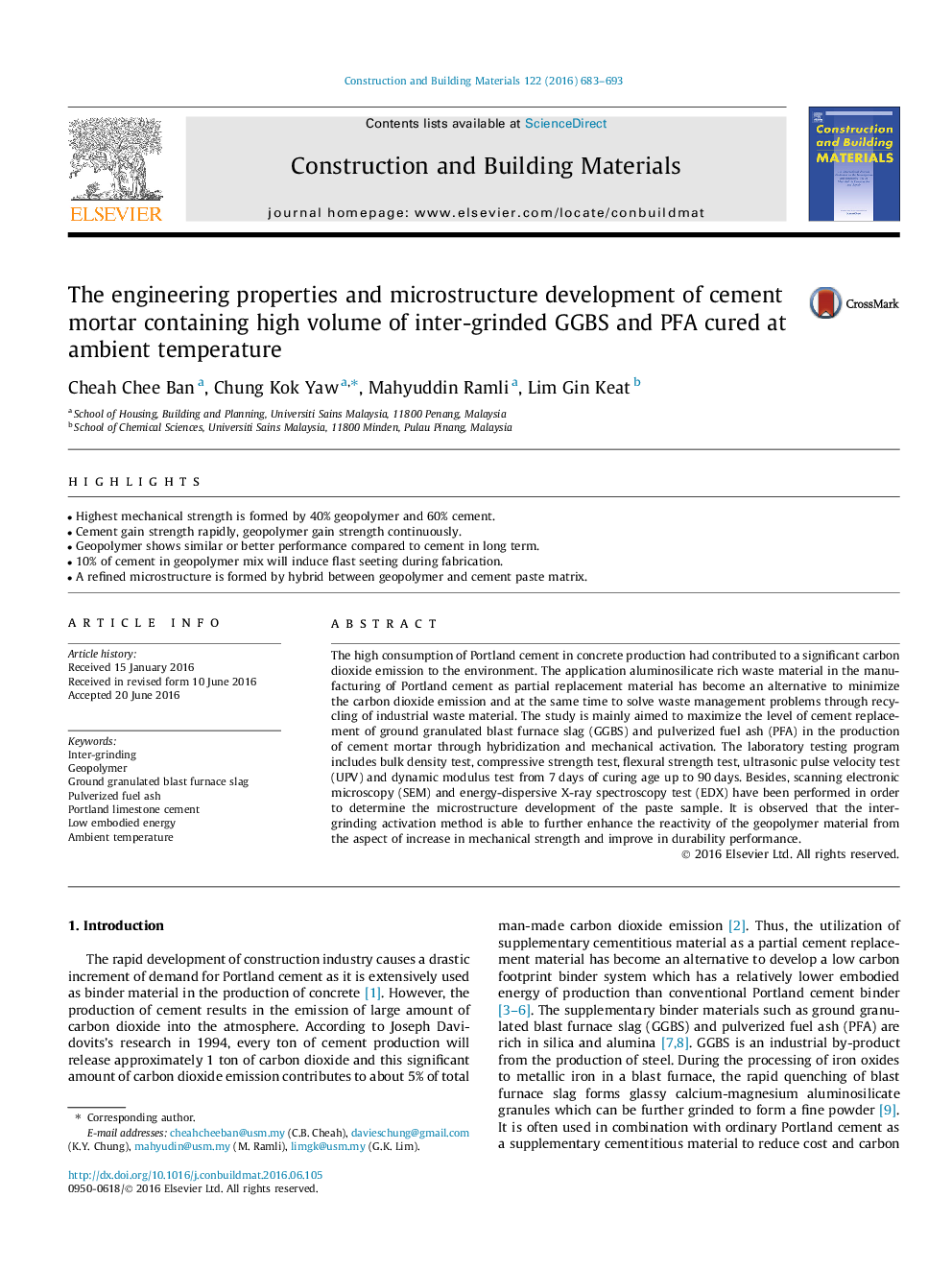| Article ID | Journal | Published Year | Pages | File Type |
|---|---|---|---|---|
| 6718363 | Construction and Building Materials | 2016 | 11 Pages |
Abstract
The high consumption of Portland cement in concrete production had contributed to a significant carbon dioxide emission to the environment. The application aluminosilicate rich waste material in the manufacturing of Portland cement as partial replacement material has become an alternative to minimize the carbon dioxide emission and at the same time to solve waste management problems through recycling of industrial waste material. The study is mainly aimed to maximize the level of cement replacement of ground granulated blast furnace slag (GGBS) and pulverized fuel ash (PFA) in the production of cement mortar through hybridization and mechanical activation. The laboratory testing program includes bulk density test, compressive strength test, flexural strength test, ultrasonic pulse velocity test (UPV) and dynamic modulus test from 7Â days of curing age up to 90Â days. Besides, scanning electronic microscopy (SEM) and energy-dispersive X-ray spectroscopy test (EDX) have been performed in order to determine the microstructure development of the paste sample. It is observed that the inter-grinding activation method is able to further enhance the reactivity of the geopolymer material from the aspect of increase in mechanical strength and improve in durability performance.
Keywords
Related Topics
Physical Sciences and Engineering
Engineering
Civil and Structural Engineering
Authors
Cheah Chee Ban, Chung Kok Yaw, Mahyuddin Ramli, Lim Gin Keat,
